Colonial al-Andalus: Spain and the Making of Modern Moroccan Culture
Through state-backed Catholicism, monolingualism, militarism, and dictatorship, Spain’s fascists earned their reputation for intolerance. It may therefore come as a surprise that 80,000 Moroccans fought at General Franco’s side in the 1930s. What brought these strange bedfellows together, Eric Calderwood argues, was a highly effective propaganda weapon: the legacy of medieval Muslim Iberia, known as al-Andalus. This legacy served to justify Spain’s colonization of Morocco and also to define the Moroccan national culture that supplanted colonial rule.
Writers of many political stripes have celebrated convivencia, the fabled “coexistence” of Christians, Muslims, and Jews in medieval Iberia. According to this widely-held view, modern Spain and Morocco are joined through their shared Andalusi past. Colonial al-Andalus traces this supposedly timeless narrative to the mid-1800s, when Spanish politicians and intellectuals first used it to press for Morocco’s colonization. Franco later harnessed convivencia to the benefit of Spain’s colonial program in Morocco. This shift precipitated an eloquent historical irony. As Moroccans embraced the Spanish insistence on Morocco’s Andalusi heritage, a Spanish idea about Morocco gradually became a Moroccan idea about Morocco.
Drawing on a rich archive of Spanish, Arabic, French, and Catalan sources—including literature, historiography, journalism, political speeches, schoolbooks, tourist brochures, and visual arts—Calderwood reconstructs the varied political career of convivencia and al-Andalus, showing how shared pasts become raw material for divergent contemporary ideologies, including Spanish fascism and Moroccan nationalism. Colonial al-Andalus exposes the limits of simplistic oppositions between European and Arab, Christian and Muslim, that shape current debates about European colonialism.
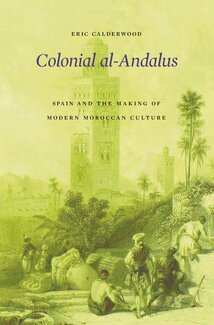
Radical Histories of Sanctuary
This editors’ introduction examines the genealogies of sanctuary as a space—and movement-based oppositional practice, one that contests the sovereign power of the nation-state and the structural roots of multiple, intersecting oppressions. Like each contribution to this special issue, the introduction challenges readers to reconsider the meanings and possibilities of sanctuary movements across time and place. It raises contexts and themes that are investigated in the issue’s contributions on the struggles of migrant communities in a context of increasingly militarized borders, Indigenous practices of radical hospitality, GLBTQ spaces of refuge, policing reform efforts, and practices of civil disobedience. This introduction looks to both the history and the radical future of sanctuary.
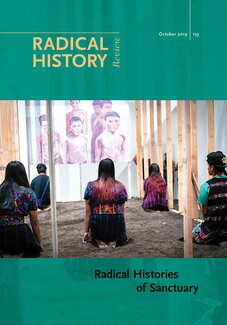
Policing, Justice, and the Radical Imagination
This issue]highlights the historically oriented scholarship and politically engaged writing that examine places and times without police.... Modern approaches to governance generally take police as necessary to maintaining social peace, even though they have proven to fail at fostering public safety and in fact tend to escalate harm and violence. Following the lead of activists working to dismantle police, prisons, and other institutions of state violence, the [special issue] takes seriously the question of how to imagine, and build, a world without police. It looks specifically to historical analysis as an especially useful vantage from which to respond to this provocation.... The issue’s contributors detail times and places when people worked without or against formal institutions of modern police.
From the introduction:
"What if we attempted to collect these case studies systematically, putting scholars of various disciplinary stripes in dialogue with activists to ponder these questions together? This issue draws on a range of available resources and methods -- ethnography; political and legal analysis; social and cultural history; art history; literary criticism; and critical inquiry and visual culture by activists organizing to protect people from police violence and, ultimately, to dismantle police. In the limited space between the two covers of this issue, we could only include a small—but, we hope, compelling—sampling of the ways communities pursued public safety and social peace through a variety of means apart from formal policing institutions. The contributions here remind us of the powerful truth at the heart of the study of history: we need to historicize to denaturalize--to comprehend how features of our world taken for granted as necessary elements of a complex modern society emerged out of a historical process."
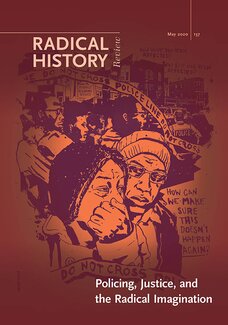
Militarism and Capitalism: The Work and Wages of Violence
Militarism and capitalism have been conjoined, in symbiosis, from at least the period of the triangular trade one-half millennia ago, when industrialization projects around the globe trafficked in human bodies and the labor and armaments of systemic control. The evolving enmeshment of capitalist and military growth, in fact, generates a multitude of intricate relationships, where militarism avails its considerable resources to suppress anticapitalist movements globally, and where the military-industrial complex stabilizes capitalist activity, absorbing its excesses by producing armaments, surveillance tactics, and ever-diversifying uses of security technology. Further, as capitalist activity continues to seek new markets and forms of production, in concomitant fashion, policies of human dispossession, dislocation, and destruction inevitably are normalized. In the United States, for example, state and private enterprises approach these twined forces of expansion and destruction with the false yet clichéd appeal of spreading the “greater goods” of capitalism and democracy through the War on Terror. That is, deeper conjunctions of militarism and capitalism make the line between them increasingly indistinct and call for radical interventions to expose the military-industrial complex’s inner workings and impacts on the quality of human life and on the viability of societies across the globe. The editors of this issue and the scholars whose work appears on its pages seek to demonstrate the critical need to understand capitalist projects and military aggression by illuminating their deep entanglements.
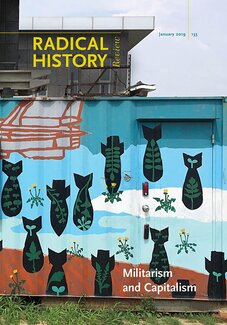
Bans, Walls, Raids, Sanctuary: Understanding U.S. Immigration for the Twenty-First Century
Days after taking the White House, Donald Trump signed three executive orders—these authorized the Muslim Ban, the border wall, and ICE raids. These orders would define his administration’s approach toward noncitizens. An essential primer on how we got here, Bans, Walls, Raids, Sanctuary shows that such barriers to immigration are embedded in the very foundation of the United States. A. Naomi Paik reveals that the forty-fifth president’s xenophobic, racist, ableist, patriarchal ascendancy is no aberration, but the consequence of two centuries of U.S. political, economic, and social culture. She deftly demonstrates that attacks against migrants are tightly bound to assaults against women, people of color, workers, ill and disabled people, and queer and gender nonconforming people. Against this history of barriers and assaults, Bans, Walls, Raids, Sanctuary mounts a rallying cry for a broad-based, abolitionist sanctuary movement for all.
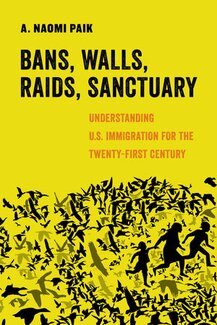
Fresh Water: Design Research for Inland Water Territories
Fresh Water is a book that addresses regional, territorial, and continental water issues through interdisciplinary design research in landscape architecture. The geographical and hydrosocial context of the major inland (non-coastal) watersheds of the North American continent–the Mississippi, the Great Lakes Basin-St. Lawrence and the Nelson–remains an under-explored field for design research. Major spatial, temporal, biological, and geological manipulations of water bodies, systems, and flows raise critical questions about how to redefine human-hydro relationships and to reverse the deterioration of freshwater systems across the territory. Fresh Water assembles scholarly papers from designers that reframe complex issues of industrial agriculture, energy production, urban sewersheds, water law, transportation tributaries, and cross-watershed diversions, to propose new inland water futures. Design contributors interrogate the institutional regime and control of inland water, integrating diverse disciplinary knowledge to support multi-scalar interventions that challenge land and water policy to consider a range of new and urgent partnerships and projects this century.
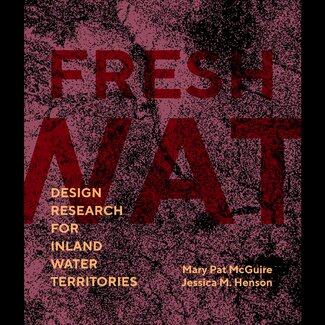
Gilberto Gil's Refazenda
Refazenda connects a remarkable album by one of the 20th and 21st centuries' great musicians to a dazzling, often unexpected, array of people and places spread across the globe from Brazil to England to Chile to Japan. Critics and fans often project (or impose) desires and interpretations onto Gil that don't seem to fit. This book explores why familiar political and musical categories so often fall flat and explains why serendipity may instead be the best way to approach this mercurial album and the unrepeatable artist who created it. Based on years of listening to, studying, and teaching about Gil, and the author's own encounters with the album around the world, this book argues that Refazenda does, in fact, contain radical messages, though they rarely appear in the form, shape, or places that we might expect. The book also includes the first English-language translations of the album's lyrics, never-discussed-before 1970s Japanese liner notes, and a recounting of a forgotten moment when censors detained Gil during the album's debut tour. 33 1/3 Global, a series related to but independent from 33 1/3, takes the format of the original series of short, music-basedbooks and brings the focus to music throughout the world. With initial volumes focusing on Japanese and Brazilian music, the series will also include volumes on the popular music of Australia/Oceania, Europe, Africa, the Middle East, and more.
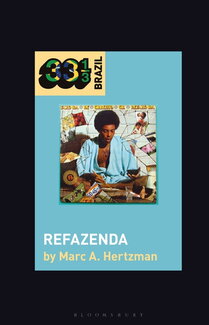
Counter-Cola: A Multinational History of the Global Corporation
Counter-Cola charts the history of one of the world’s most influential and widely known corporations, The Coca-Cola Company. Over the past 130 years, the corporation has sought to make its products, brands, and business central to daily life in over 200 countries. Amanda Ciafone uses this example of global capitalism to reveal the pursuit of corporate power within the key economic transformations—liberal, developmentalist, neoliberal—of the twentieth and twenty-first centuries. Coca-Cola's success has not gone uncontested. People throughout the world have redeployed the corporation, its commodities, and brand images to challenge the injustices of daily life under capitalism. As Ciafone shows, assertions of national economic interests, critiques of cultural homogenization, fights for workers’ rights, movements for environmental justice, and debates over public health have obliged the corporation to justify itself in terms of the common good, demonstrating capitalism’s imperative to either assimilate critiques or reveal its limits.

Martial Law Melodrama: Lino Brocka's Cinema Politics
Lino Brocka (1939–1991) was one of Asia and the Global South’s most celebrated filmmakers. A versatile talent, he was at once a bankable director of genre movies, an internationally acclaimed auteur of social films, a pioneer of queer cinema, and an outspoken critic of Ferdinand Marcos’s autocratic regime. José B. Capino examines the figuration of politics in the Filipino director’s movies, illuminating their historical contexts, allegorical tropes, and social critiques. Combining eye-opening archival research with fresh interpretations of over fifteen of Brocka’s major and minor works, Martial Law Melodrama does more than reveal the breadth of his political vision. It also offers a timely lesson about popular cinema’s vital role in the struggle for democracy.
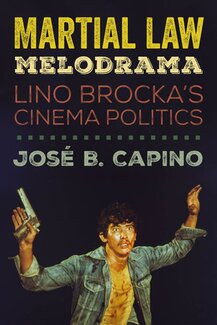
Other Natures: Environmental Encounters with Ancient Greek Ethnography
Ancient Greek ethnographies—descriptions of other peoples—provide unique resources for understanding ancient environmental thought and assumptions, as well as anxieties, about how humans relate to nature as a whole. In Other Natures, Clara Bosak-Schroeder examines the works of seminal authors such as Herodotus and Diodorus Siculus to persuasively demonstrate how non-Greek communities affected and were in turn deeply affected by their local animals, plants, climate, and landscape. She shows that these authors used ethnographies of non-Greek peoples to explore, question, and challenge how Greeks ate, procreated, nurtured, collaborated, accumulated, and consumed. In recuperating this important strain of ancient thought, Bosak-Schroeder makes it newly relevant to vital questions and ideas being posed in the environmental humanities today, arguing that human life and well-being are inextricable from the life and well-being of the nonhuman world. By turning to such ancient ethnographies, we can uncover important models for confronting environmental crisis.
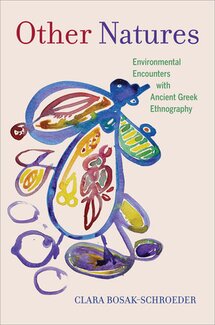
100 English Building
608 South Wright Street
Urbana, Illinois 61801